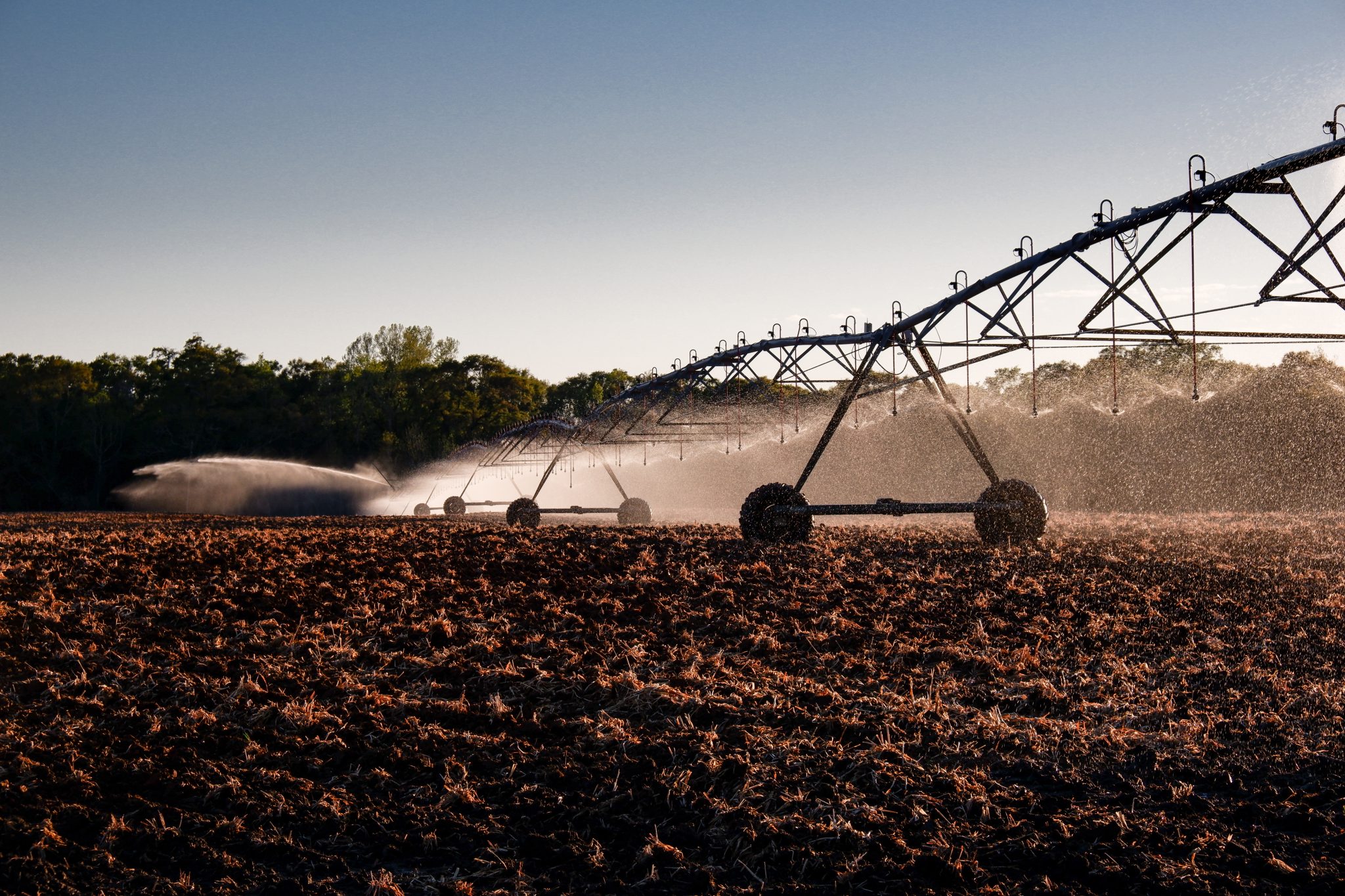Crop Production

Decisions on whether to invest in irrigation equipment are tough to make, but irrigation can mitigate one of the largest risks in crop production.
Irrigation investment and operating costs vary substantially across locations based on access to water and electricity, size and elevation of field, and other factors. This document provides case studies for three irrigation scenarios using center pivot size, water, and energy sources to highlight differences in costs and help farmers with their irrigation adoption decisions. These three scenarios can be used as guides for producers thinking about investing in irrigation, but keep in mind that each field must be individually evaluated to determine the suitable design and components of the irrigation system.
Two factors causing some of the largest variation in irrigation investment costs are access to surface water and electricity. If a field has no access to surface water, costs of drilling a well to access groundwater can vary from field to field. Costs of drilling a well typically range from $30,000 to $60,000 based on the depth of drilling and the ease of which a suitable ground water source is found.
A field’s distance from the electric grid can also significantly affect the initial costs of irrigation. If a field does not have access to electricity, the farther it is from the grid, the more expensive it will be for the electric company to provide a line extension. When beginning the planning process, talk with your electric supplier to get an estimate of the initial and operating costs associated with a given field. Some electric companies may charge extra fees to turn on electricity each month to a specific field or for running a high-powered electric pump.
Diesel-powered irrigation systems can be advantageous for fields where access to electricity is cost prohibitive. A diesel system, however, can be less convenient for the operator because fuel must be transported to the field and often must be manually turned on in the field. Electric systems often come with remote operation and, therefore, can be started and monitored from a cellular device.
Irrigation Scenario Descriptions
The following paragraphs describe the specifications of three irrigation system scenarios as summarized in Table 1. The first two cases explore irrigation investment and operating costs associated with a pivot-operated system using an electric power source but with different sources of water. In Case 1, surface water is pumped from a pond to the center pivot. In Case 2, groundwater is pumped directly to the center pivot from a well.
Table 1: Irrigation Case Studies using Center Pivot Systems
| Case | Acres | Water Source | Pivot Length (ft.) | Power Source | Pump | Pump Panel |
|---|---|---|---|---|---|---|
| 1 | 64 | Pond | 1,295 | Electric | 25 HP centrifugal | 50 HP variable frequency drive |
| 2 | 134 | Well | 1,295 | Electric | 50 HP line shaft turbine | 50 HP soft start |
| 3 | 111 | Pond | 1,142 | Diesel | 50 HP centrifugal |
The number of acres covered by each 1,295-foot pivot also varies between Cases 1 and 2. In Case 1, the center pivot rotates a half circle covering 64 acres, while in Case 2, the center pivot rotates the full circle so it covers 134 acres of cropland. Because the number of acres and water sources differ between Cases 1 and 2, a smaller 25 HP pump is required in Case 1, compared with a 50 HP pump in Case 2. The pump panels also differ between Cases 1 and 2. Case 1 uses a 50 HP variable frequency drive while Case 2 uses a 50 HP soft start pump panel. A soft start pump panel reduces the torque during startup to limit stress on the system and minimize pressure surges. In Case 3, the pump and center pivot are powered by a diesel engine rather than an electric motor. In Case 3, surface water is pumped from a pond to the irrigation site. The center pivot makes a full circle with a pivot length of 1,142 feet, so it covers 111 acres. A 50 HP pump is used in Case 3.
To compare operating costs across the three cases, we assume 5-acre inches are applied in a season.
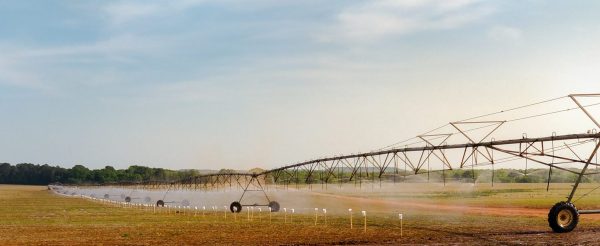
Irrigation Costs
Table 2 shows a summary of cost differences across the scenarios, while tables 3 through 5 display the detailed cost analyses for Cases 1 through 3, respectively. Case 2 involved the largest total investment costs, largely due to the expense of accessing groundwater through the well. Even though total investment costs were largest in Case 2, investment costs per acre in Case 1 were the largest due to the smaller number of acres covered by this pivot. Case 3 had the smallest per-acre investment costs, though operating costs per acre were nearly twice as much as in Cases 1 and 2.
Table 2: Summary of Investment and Operating Costs for the Three Irrigation Cases (Assuming 5 Acre-Inches Applied)
| Case | Total Investment Cost | Total Investment Cost Per Acre | Operating Cost Per Acre | Annual Cost Per Acre |
|---|---|---|---|---|
| 1 | $136,359.00 | $2,130.61 | $35.00 | $206.87 |
| 2 | $171,003.00 | $1,276.14 | $35.00 | $139.26 |
| 3 | $129,019.00 | $1,162.33 | $62.50 | $171.12 |
On an annual basis (spreading costs over the useful life of the equipment), Case 2 has the lowest cost per acre of $139.26. Case 1 has the highest per-acre annual cost of $206.87, and Case 3 was just below that with an annual per-acre cost of $171.12. So how do you know if your irrigation investment will pay off in the long run? All of the additional costs from irrigation must be covered by the increase in yield from irrigating. For example, the farmer in Case 2 would require an additional yield worth at least $139 per acre on average to justify investment. The farmer in Case 1 would need a much higher increase in yield worth roughly $207 per acre to consider investing in that irrigation system. When rainfall is no longer the limiting factor on yield, a farmer should intensify production on an irrigated field. Not considered are additional input costs of seed, fertilizer, harvest costs, etc., from intensifying production on irrigated acreage, which would need to be covered in addition to the annualized costs of irrigation.
It is clear from these scenarios that irrigation costs can vary significantly from field to field. It is important to get field-specific cost estimates from equipment dealers, electric companies, or well-drilling companies during the planning process to ensure that your decision to irrigate will be economically sustainable in the long run.
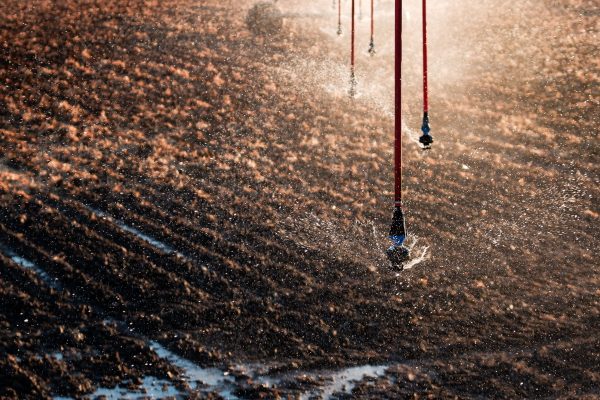 Table 3: Irrigation Investment and Operating Costs—Case 1
Table 3: Irrigation Investment and Operating Costs—Case 1
Auburn University, Alabama Cooperative Extension System, February 19, 2019
Type: Center pivot, 1,295 foot length, electric powered. Pond as a source of water
Description: System includes pivot pad, pivot, end gun, hose drops, and sprinklers all built and wired in at the pivot point. Freight and installation included in the pivot price. Area covered by the pivot is 64 acres. Water source is a pond.
Table 3.1 Investment Cost
| Item | Total | Per Acre |
|---|---|---|
| Pivot (1,295 foot length, 6 towers [spans], electric drive) | $88,609.00 | $1,384.52 |
| Pump (25 HP centrifugal) | $3,200.00 | $50.00 |
| Pipe (1,800' length and 8" PVC pipe diameter) | $6,300.00 | $98.44 |
| Wire (1,750' 250 kcmil aluminum Sure Seal wire) | $6,000.00 | $93.75 |
| Pump Panel—50 HP variable frequency drive | $6,250.00 | $97.66 |
| Utilities (three-phase power) | $10,000.00 | $156.25 |
| Valves, fittings | $3,000.00 | $46.88 |
| Remote | $3,000.00 | $46.88 |
| Riverscreen | $10,000.00 | $156.25 |
| Total Investment Cost | $136,359.00 | $2,130.61 |
Table 3.2 Annual Fixed Costs
2Interest and taxes and insurance = (initial cost/2 multiplied by the indicated percentage rate)
| Item | Investment Cost | Useful Life Years | Depreciation1 | Interest2 5.5% | Tax & Ins2 | Total | Total Per Acre |
|---|---|---|---|---|---|---|---|
| Pivot (1,295 foot length, 6 towers (spans), electric drive) | $88,609.00 | 20 | $4,430.45 | $2,436.75 | $443.05 | $7,310.24 | $114.22 |
| Pump (25 HP , centrifugal) | $3,200.00 | 20 | $160.00 | $88.00 | $16.00 | $264.00 | $4.13 |
| Pipe (1,800' 8" pipe)—$3.5 per foot | $6,300.00 | 20 | $315.00 | $173.25 | $31.50 | $519.75 | $8.12 |
| Wire (1,750')—$3.42 per foot | $6,000.00 | 20 | $300.00 | $165.00 | $30.00 | $495.00 | $7.73 |
| Valves, fittings | $3,000.00 | 20 | $150.00 | $82.50 | $15.00 | $247.50 | $3.87 |
| Riverscreen | $10,000.00 | 20 | $500.00 | $275.00 | $50.00 | $825.00 | $12.89 |
| Remote control | $3,000.00 | 20 | $150.00 | $82.50 | $15.00 | $247.50 | $3.87 |
| Utilities (to bring three-phase power to the pivot) | $10,000.00 | 40 | $250.00 | $275.00 | $50.00 | $575.00 | $8.98 |
| Total Fixed Cost | $136,359.00 | $6,567.95 | $3,749.87 | $681.80 | $10,999.62 | $171.87 |
Table 3.3 Annual Operating Cost Per Acre-Inch of Water Applied
4Five acre-inches applied = The total irrigation events in a season will vary by weather conditions. Five inches was assumed in this budget.
| Power Source | Cost Per Acre-inch3 | 5 Acres-inches Applied4 | Total | Total Per Acre |
|---|---|---|---|---|
| Electric | $7.00 | $35.00 | $2,240.00 | $35.00 |
Table 3.4 Total Annual Cost
| Total | Total Per Acre | ||
|---|---|---|---|
| Total Fixed and Operating Cost | $13,239.62 | $206.87 |
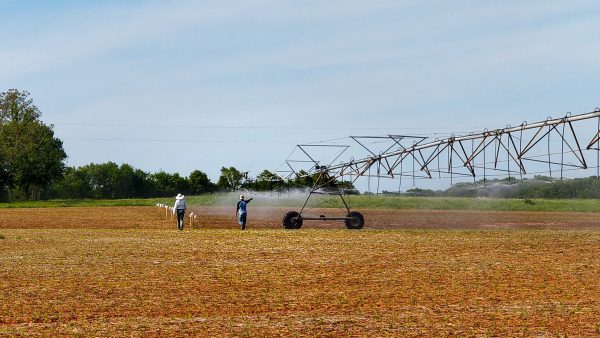 Table 4: Irrigation Investment and Operating Costs—Case 2
Table 4: Irrigation Investment and Operating Costs—Case 2
Auburn University, Alabama Cooperative Extension System, February 19, 2019
Type: Center pivot, 1295 foot length, electric powered. Well as a source of water
Description: System includes pivot pad, pivot, end gun, hose drops, sprinklers all built and wired in at the pivot point. Freight and installation included in the pivot price. Area covered by the pivot is 134 acres. Water source is a well.
Table 4.1 Investment Cost
| Item | Total | Per Acre |
|---|---|---|
| Pivot (1,295 foot length, 7 towers [spans], electric drive) | $90,478.00 | $675.21 |
| Pump (50 HP line shaft turbine) | $15,000.00 | $111.94 |
| Pipe (1,700' length and 8" PVC pipe diameter) | $11,400.00 | $85.07 |
| Wire (1,357' 250 kcmil aluminum Sure Seal wire) | $6,625.00 | $49.44 |
| Pump Panel (50 HP soft start) | $5,000.00 | $37.31 |
| Utilities (three-phase power) | $5,500.00 | $41.04 |
| Valves, fittings | $3,000.00 | $22.39 |
| Remote control | $3,000.00 | $22.39 |
| Well | $31,000.00 | $231.34 |
| Total Investment Cost | $171,003.00 | $1,276.14 |
Table 4.2 Annual Fixed Costs
2Interest and taxes and insurance = (initial cost/2 multiplied by the indicated percentage rate)
| Item | Investment Cost | Useful Life Years | Depreciation1 | Interest2 5.5% | Tax & Ins2 | Total | Total Per Acre |
|---|---|---|---|---|---|---|---|
| Pivot (1295 foot length, 7 Towers (spans), electric drive) | $90,478.00 | 20 | $4,523.90 | $2,488.15 | $452.39 | $7,464.44 | $55.70 |
| Pump (50 HP Line shaft turbine) | $15,000.00 | 20 | $750.00 | $412.50 | $75.00 | $1,237.50 | $9.24 |
| Pump Panel (50 HP Soft Start) | $5,000.00 | 20 | $250.00 | $137.50 | $25.00 | $412.50 | $3.08 |
| Pipe (1700' 8" pipe)—$6.70 per foot | $11,400.00 | 20 | $570.00 | $313.50 | $57.00 | $940.50 | $7.02 |
| Wire (1,357')—$4.88 per foot | $6,625.00 | 20 | $331.25 | $182.19 | $33.13 | $546.56 | $4.08 |
| Valves, fittings | $3,000.00 | 20 | $150.00 | $82.50 | $15.00 | $247.50 | $1.85 |
| Remote control | $3,000.00 | 20 | $150.00 | $82.50 | $15.00 | $247.50 | $1.85 |
| Well | $31,000.00 | 20 | $1,550.00 | $852.50 | $155.00 | $2,557.50 | $19.09 |
| Utilities (to bring three-phase power to the pivot) | $5,500.00 | 40 | $137.50 | $151.25 | $27.50 | $316.25 | $2.36 |
| Total Fixed Cost | $171,003.00 | $8,412.65 | $4,702.58 | $855.02 | $13,970.25 | $104.26 |
Table 4.3 Annual Operating Cost Per Acre-Inch of Water Applied
4Five acre-inches applied = The total irrigation events in a season will vary by weather conditions. Five inches was assumed in this budget.
| Power Source | Cost Per Acre-inch3 | 5 Acres-inches Applied4 | Total | Total Per Acre |
|---|---|---|---|---|
| Electric | $7.00 | $35.00 | $4,690.00 | $35.00 |
Table 4.4 Total Annual Cost
| Total | Total Per Acre | ||
|---|---|---|---|
| Total Fixed and Operating Cost | $18,660.25 | $139.26 |
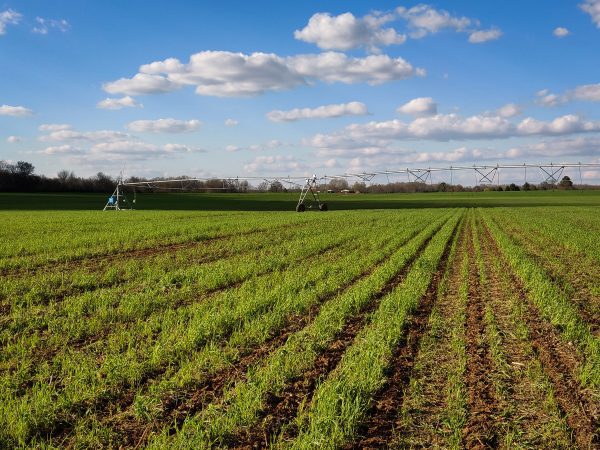 Table 5: Irrigation Investment and Operating Costs—Case 3
Table 5: Irrigation Investment and Operating Costs—Case 3
Auburn University, Alabama Cooperative Extension System, February 19, 2019
Type: Center pivot, 1,142 foot length, diesel powered. Pond as a source of water.
Description: System includes pivot pad, pivot, end gun, hose drops, sprinklers, all built and wired in at the pivot point. Freight and installation included in the pivot price. Area covered by the pivot is 111 acres. Water source is a pond.
Table 5.1 Investment Cost
| Item | Total | Per Acre |
|---|---|---|
| Pivot (1,295 foot length, 6 towers [spans], engine driven pump) | $69,164.00 | $623.10 |
| Pump (50 HP centrifugal) | $30,318.00 | $273.14 |
| Pipe (1,830' length and 8" PVC pipe diameter) | $14,597.00 | $131.50 |
| Wire (1,750’ #4 aluminum Sure Seal wire) | $2,690.00 | $24.23 |
| Utilities (480V three-phase side mount generator on pump) | $1,000.00 | $9.01 |
| Valves, fittings | $3,450.00 | $31.08 |
| Remote control | $2,400.00 | $21.62 |
| Riverscreen | $5,400.00 | $48.65 |
| Total Investment Cost | $129,019.00 | $1,162.33 |
Table 5.2 Annual Fixed Costs
2Interest and taxes and insurance = (initial cost/2 multiplied by the indicated percentage rate)
| Item | Investment Cost | Useful Life Years | Depreciation1 | Interest2 5.5% | Tax & Ins2 | Total | Total Per Acre |
|---|---|---|---|---|---|---|---|
| Pivot (1,142 foot length, 6 towers [spans], engine driven pump) | $69,164.00 | 20 | $3,458.20 | $1,902.01 | $345.82 | $5,706.03 | $51.41 |
| Pump (50 HP centrifugal) | $30,318.00 | 20 | $1,515.90 | $833.75 | $151.59 | $2,501.24 | $22.53 |
| Pipe (1,830' 8" pipe) - $7.97 per foot | $14,597.00 | 20 | $729.85 | $401.42 | $72.99 | $1,204.25 | $10.85 |
| Wire (1,750’) - $1.53 per foot | $2,690.00 | 20 | $134.50 | $73.98 | $13.45 | $221.93 | $2.00 |
| Valves, fittings | $3,450.00 | 20 | $172.50 | $94.88 | $17.25 | $284.63 | $2.56 |
| Remote | $2,400.00 | 20 | $120.00 | $66.00 | $12.00 | $198.00 | $1.78 |
| Riverscreen | $5,400.00 | 20 | $270.00 | $148.50 | $27.00 | $445.50 | $4.01 |
| Utilities (480V three-phase side mount generator on pump) | $1,000.00 | 40 | $25.00 | $27.50 | $5.00 | $57.50 | $0.52 |
| Total Fixed Cost | $129,019.00 | $6,425.95 | $3,548.02 | $645.10 | $10,619.07 | $95.67 |
Table 5.3 Annual Operating Cost Per Acre-Inch of Water Applied
4Five acre-inches applied = The total irrigation events in a season will vary by weather conditions. Five inches was assumed in this budget.
| Power Source | Cost Per Acre-inch3 | 5 Acres-inches Applied4 | Total | Total Per Acre |
|---|---|---|---|---|
| Diesel | $12.50 | $62.50 | $8,375.00 | $62.50 |
Table 5.4 Total Annual Cost
| Total | Total Per Acre | ||
|---|---|---|---|
| Total Fixed and Operating Cost | $18,994.07 | $171.12 |
Guilherme Morata, Graduate Research Assistant, Crop, Soils, and Environmental Sciences; Brittney Goodrich, Extension Specialist, Assistant Professor, Agricultural Economics and Rural Sociology; and Brenda V. Ortiz, Extension Specialist, Associate Professor, Crop, Soils, and Environmental Sciences, all with Auburn University
Reviewed March 2022, Investment Costs of Center Pivot Irrigation in Alabama—Three Scenarios, ANR-2541
We acknowledge the funding of the CIG-NRCS program (Agreement Number: 69-3A75-17-273) and the 2017 AAES Production Agriculture Research Program.
We acknowledge data and revisions from Doug Parrish from Trigreen Equipment and Blake Reid from Reid Brothers Irrigation, both are Valley Irrigation dealers.
Photo credit: Luca Bondesan, Research Associate, Crop, Soil, and Environmental Sciences, Auburn University

